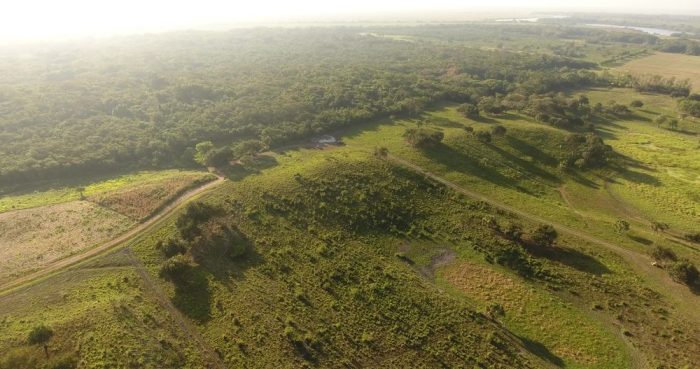By Yucatan Times on June 3, 2020

An aerial view of the area southwest of Aguada Fenix (Tabasco, Mexico). TAKESHI INOMATA
Researchers relate the construction to the transition from an itinerant lifestyle to a more sedentary one.
TABASCO Mexico (El País) – A walk through Aguada Fenix in Tabasco Mexico is like walking on sandy roads surrounded by a dense natural landscape.
“No one suspected what lay beneath,” says Takeshi Inomata, a researcher at the School of Anthropology at the University of Arizona in the United States and author of a study published Wednesday in Nature.
According to the study’s descriptions, the dirt roads and numerous trees hide an artificial Mayan platform that extends over an astonishing area of some 563,000 square meters. It is the largest and most ancient structure discovered so far in the Mayan civilization, marking the transition from an itinerant to a more sedentary lifestyle since 950 BC.
Thanks to the Lídar technology, a laser detection method that creates a three-dimensional map, a set of ceremonial centers were drawn, built between 1000 and 800 B.C., about 10 to 15 meters high and from which nine roadways emerge.
“It was impressive to see all that surface area. It’s huge,” the researcher confirms.
 Melina Garcia, one of the researchers, in Aguada Fenix looking for evidence.
Melina Garcia, one of the researchers, in Aguada Fenix looking for evidence. TAKESHI INOMATA
The discovery challenges the models conceived so far. To begin with, the scientific community thought that the Mayan civilization was built little by little, that is, village by village, until it reached more massive structures. But this excavation shows the opposite: they started from the largest to create the small. “I think that having such a strong base helped them to organize themselves and spread out into smaller villages,” says Inomata.
More, with photos:
https://www.theyucatantimes.com/2020/06/the-oldest-and-largest-mayan-monumental-structure-known-to-date-discovered/
 = new reply since forum marked as read
= new reply since forum marked as read

